Exhibitions
Traces of Genius: Celebrating the 160th Anniversary of Takeuchi Seiho’s Birth

This spring, Umi-Mori Art Museum will stage the exhibition Traces of Genius: Celebrating the 160th Anniversary of Takeuchi Seiho’s Birth.
Takeuchi Seiho (1864-1942) had a major influence on Japanese painting as a central figure in Kyoto’s painting circles over a long period spanning the Meiji era to the early Showa era. In his youth, he tried to change Kyoto’s stubborn adherence to the old ways of doing things. To this end, he fervently studied the classics and he stepped beyond the strictures of any one artistic school to learn a range of painting styles. In 1900 (Meiji 33), he travelled overseas to encounter Western art. Thereafter, he tried to modernize Japanese art by incorporating aspects of Western realism. He continued to search for new forms of expression and avidly create new works until his death at age 77.
Our museum has assembled a comprehensive collection of Seiho’s works in the 40 years or so since our founding. These include materials formerly owned by Seiho himself as well as such august works as Historic Spot of Rome, which expresses Seiho’s captivation with Italian and Roman ruins across a monumental panorama, and Suez Landscape, a rare example of a Seiho oil painting. Our museum has held several exhibitions of these works in the past. Furthermore, since opening again in 2018 following renovation work, we have also introduced works and materials in the Takeuchi Seiho Exhibition Room. However, this exhibition marks the first time in a decade that our entire Seiho collection will be on display. The exhibition will also borrow valuable works from other museums to help trace the trajectory of Seiho’s creativity from his younger days to his later years.
This exhibition will present a multi-faceted overview of Seiho’s activities through paintings as well as sketches and other materials, objects formerly owned by Seiho, collaborations with his painting compatriots, and woodblock prints produced under Seiho’s supervision.
With his dedication to realism, Seiho would meticulously observe the forms and textures of plants and animals in order to accurately portray them using his masterful painting techniques. We hope this exhibition fully conveys the charms of his works while also elucidating how they were created.
Finally, we would like to extend our thanks the museums who lent their precious works and to everyone whose kind cooperation made this exhibition possible.
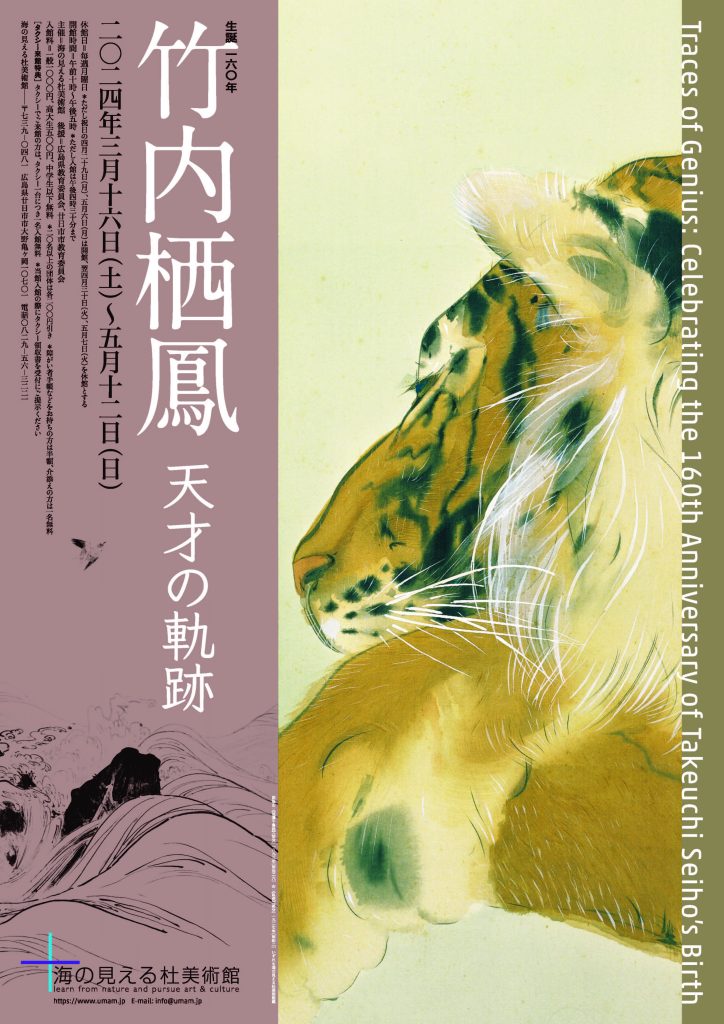
General Information
Hours: 10:00-17:00 (Last entry: 16:30)
Closed: Monday (except April 29th and May 6th), and April 30th, May 7th
Admission: General admission: 1,000 yen, High school/university students: 500 yen, Junior high school students and younger: Free
*Admission is half price for people with disability certificates, etc. One accompany person is admitted free of charge.
*Groups of 20 or over will receive a discount of 200 yen per person.
Venue: Umi-Mori Art Museum (10701 Kamegaoka, Ohno, Hatsukaichi, Hiroshima)
With the support of: Hiroshima Board of Education and Hatsukaichi City Board of Education
Chapter One: Seiho and the Dawn of Modern Kyoto Painting
Seiho was born in 1864, toward the end of the Edo period (1603–1868). His family ran Kamemasa, a restaurant located near Kyoto’s Nijo Castle. One of the restaurant’s customers was a Yuzen painter. The young Seiho was fascinated by this painter’s brushwork, with Seiho’s own artistic inclinations gradually growing stronger thereafter. He began painting in his mid-teens and he was granted the artist name “Seiho” by his teacher, the Shijo school painter Kono Bairei.
Seiho started out as a painter at the dawn of the new Meiji era, when a febrile atmosphere was also sweeping Kyoto’s art world. Artists continued to respect Kyoto’s long-held artistic traditions, but momentum for change was also growing. In 1886, the art historian Ernest Fenollosa delivered a lecture in Kyoto in which he said Kyoto’s artists were lagging behind their Tokyo counterparts because they were too obsessed with protecting their own particular schools or styles. This speech had a huge impact on Seiho and it encouraged him to try developing forms of Japanese painting suitable for the new age. He set to work studying and copying a variety of classic paintings and he produced works that utilized the techniques of several painting schools. At times, his efforts were lampooned as belonging to the “Nue School” (a “nue” in Japanese is a monster made of the body parts of several different animals), but with Seiho winning prizes at a number of exhibitions, the Kyoto art world slowly began to acknowledge his talents and presence.
The works in this chapter were painted amid the fervor of the new Meiji era. They reveal a painter passionately striving to create new forms of expression while also incorporating Kyoto’s artistic traditions.

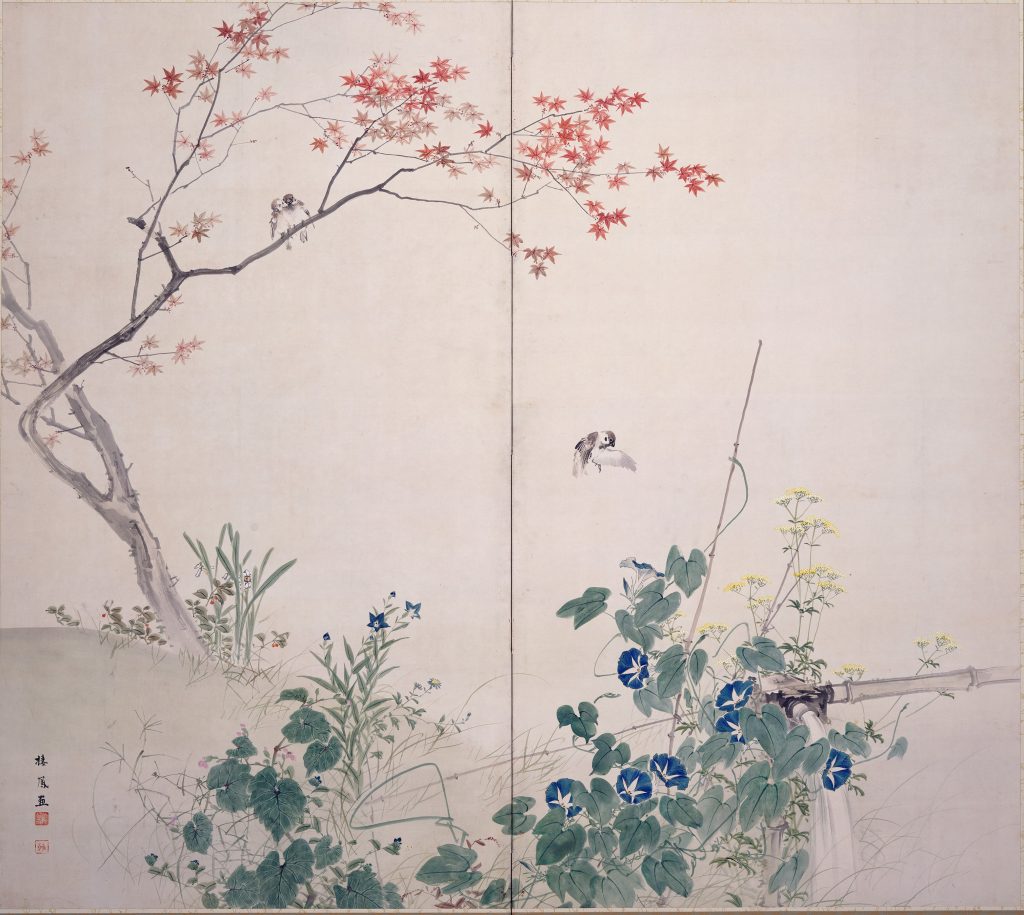
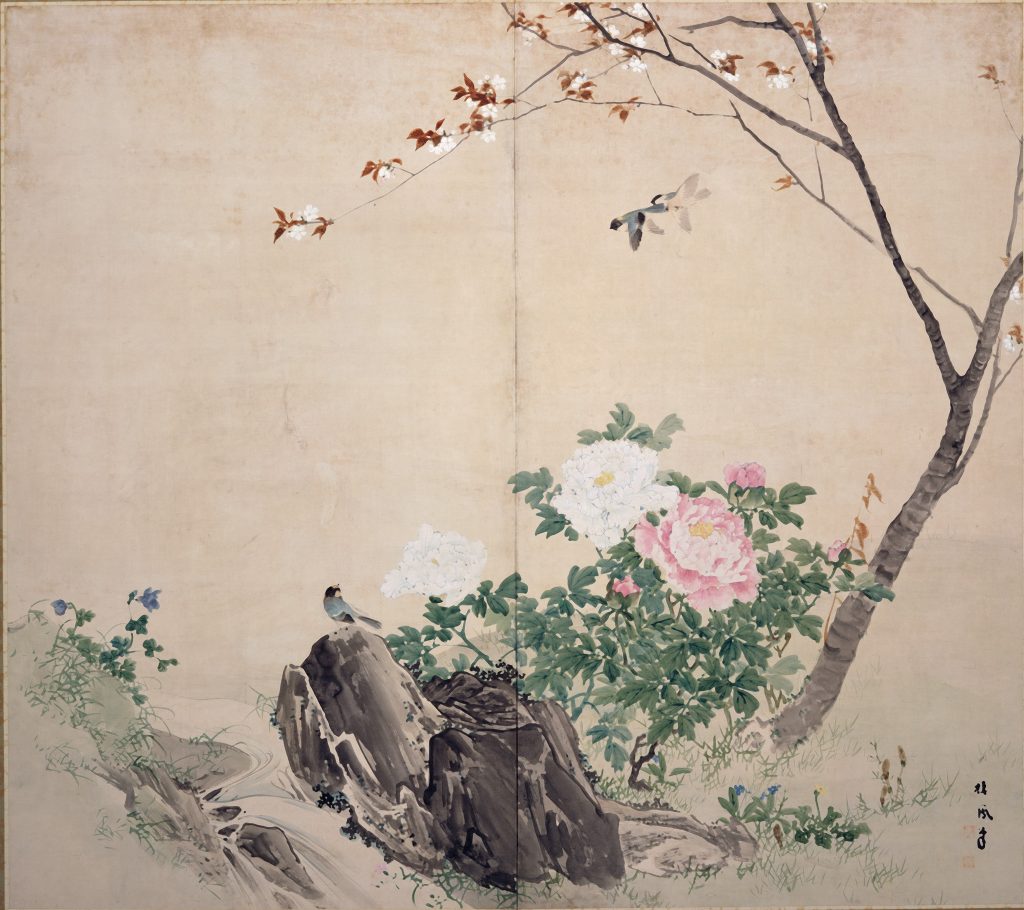
Takeuchi Seiho,Spromg and Autumn,Ca.1889(Meiji22),Umi-Mori Art Museum
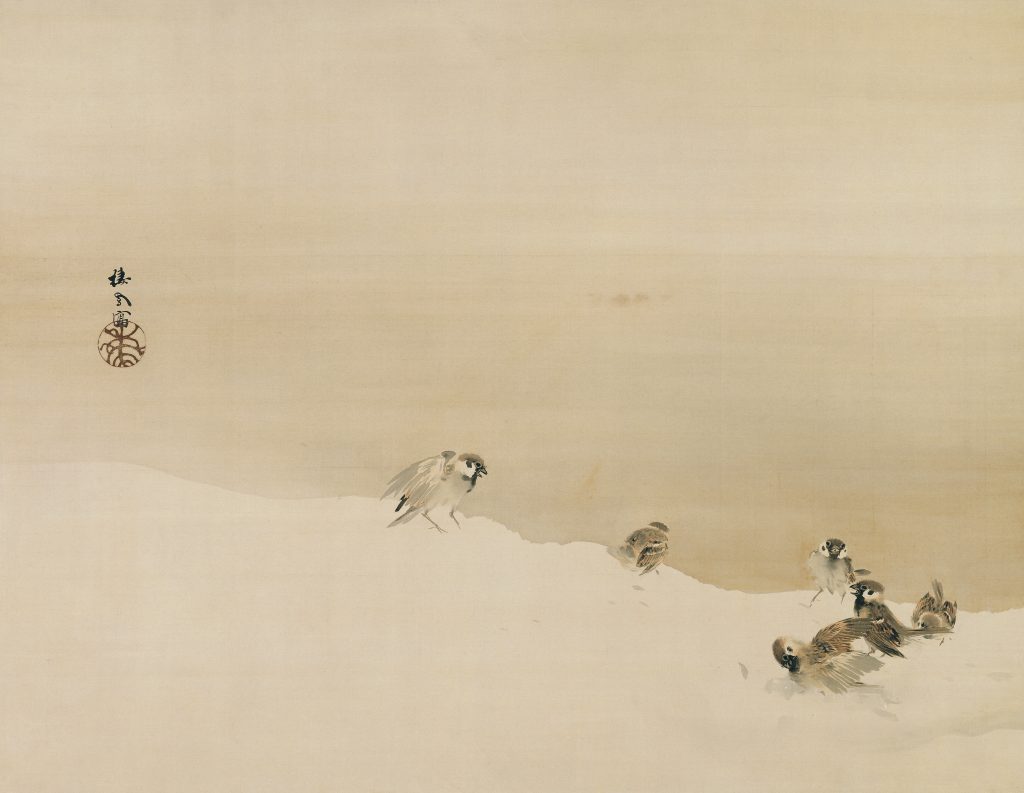
Sparrows in Snow,Ca.1899(Meiji32)、Umi-Mori Art Museum
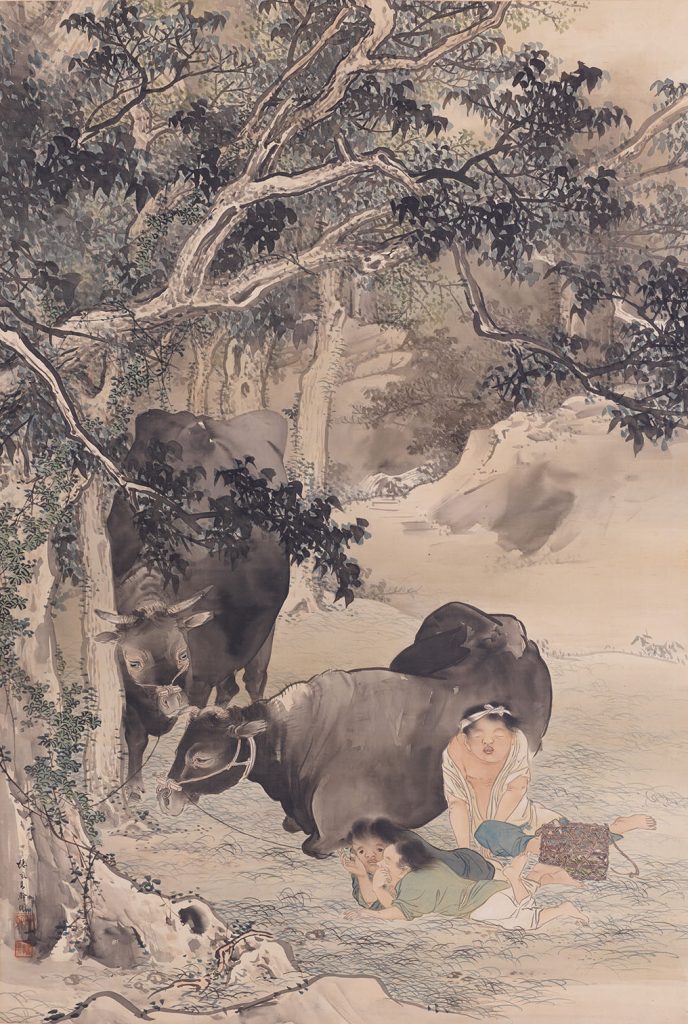
Chapter Two: Observations from Foreign Climes
In 1900, Seiho travelled to Europe to observe the Paris World Exposition on behalf of Kyoto City and the Ministry of Agriculture and Commerce. He travelled from Kobe to Paris via Hong Kong, Singapore, Penang, Suez, Port Said and Marseille. He then toured around London, Berlin, Vienna, Venice, Florence and Rome. His experiences in Europe proved to be a major turning point in his painting career. When the trip was over, he changed his artist name. Though he kept the name “Seiho,” he changed the first syllable of his name to a different kanji that incorporated the character for “west.”
During his European trip, Seiho met the painters Raphael Collin and Jean-Leon Gerome. He also witnessed scenery and animals like nothing he had seen in Japan, with a real lion leaving a particularly strong impression on him. He was also deeply moved by encounters with works by painters like Turner and Van Gogh. He realized how the essence of Western art lay in realism and he tried reflecting this in his own works. However, he later recounted how he had also become more aware of the distinctive tendency in Asian painting to represent the feel or spirit of an object over its actual appearance.
This chapter focuses on works that portray Seiho’s observations in Europe. In these paintings, we can sense the fresh impressions roused in Seiho through his encounter with the West.
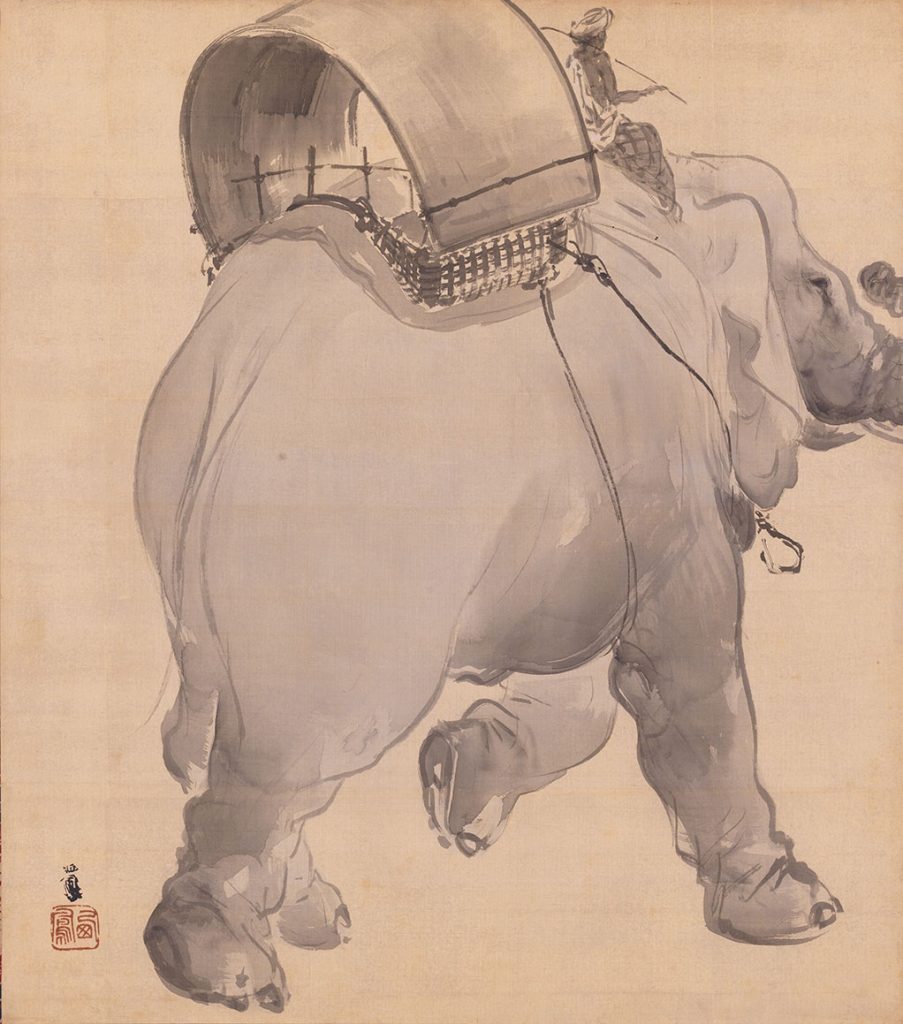
Takeuchi Seiho,Elephant Training,Ca.1905(Meiji38),Umi-Mori Art Museum
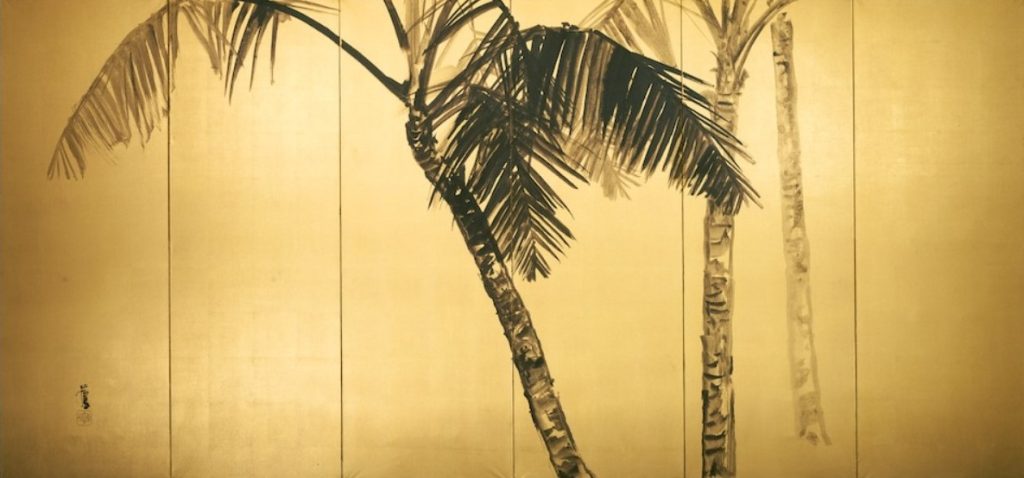
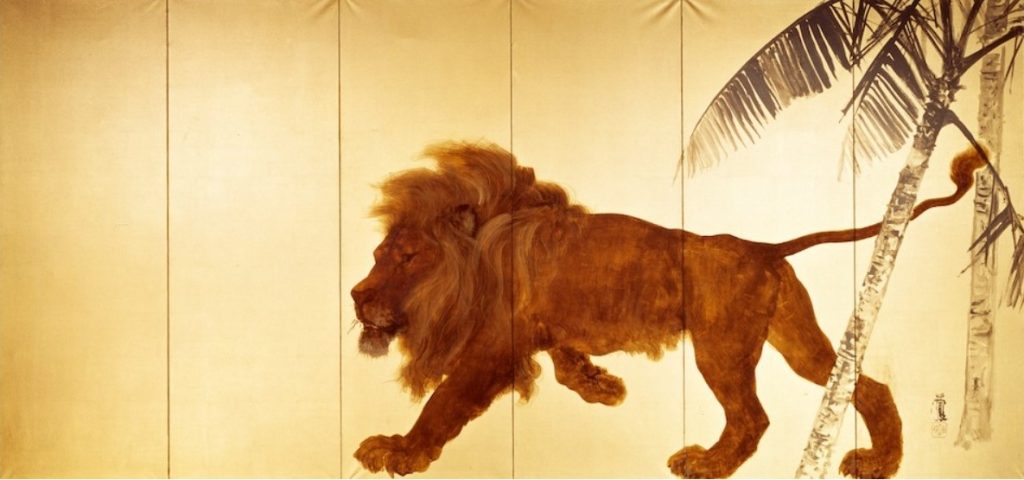
Takeuchi Seiho,Lion,Ca.1901~02(Meiji34~35),Tokyo Fuji Art Museum(April 16-May 12)
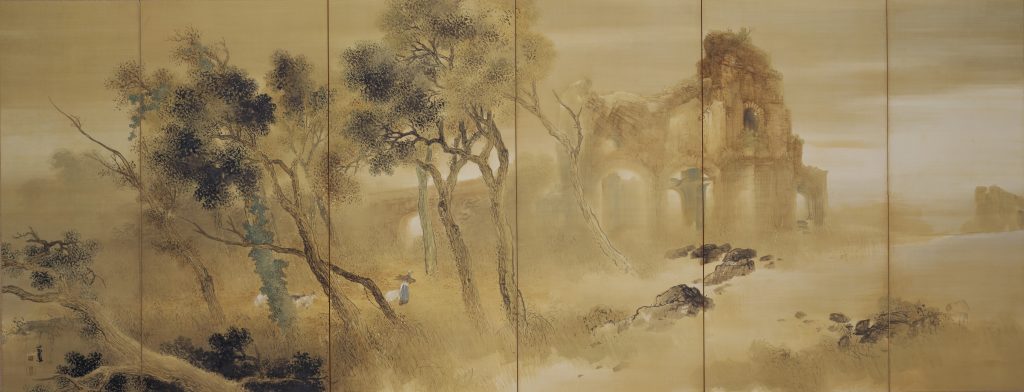
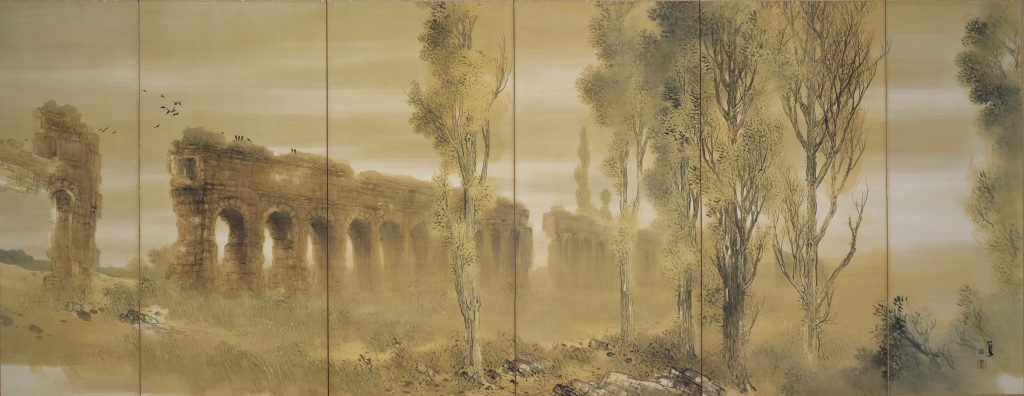
Takeuchi Seiho,Historic Spot of Rome,1903(Meiji36),Umi-Mori Art Museum(March 16-April 14)
Chapter Three: Becoming a Mainstay of Kyoto Painting Circles
After returning from Europe, Seiho became a central figure in Kyoto’s painting circles in both name and reality.
1907 saw the staging of first Ministry of Education Fine Arts Exhibition (Bunten), a national exhibition sponsored by the government. By now, Seiho was already a recognized authority and he served as a Bunten judge while continuing to create his own ambitious works. He taught at Kyoto City Technical School of Painting too and he also trained many students at Chikujokai, his own private painting school, with Seiho becoming a leader and mentor across the Kyoto painting world. He also became more productive himself after receiving the backing of powerful supporters who understood the value of his work.
During this time, Seiho continued to engage with a variety of different styles and themes. Painted after his dramatic experiences in Europe, the works in this chapter show Seiho striving to comprehend Western art while assimilating its techniques into his own Japanese paintings.
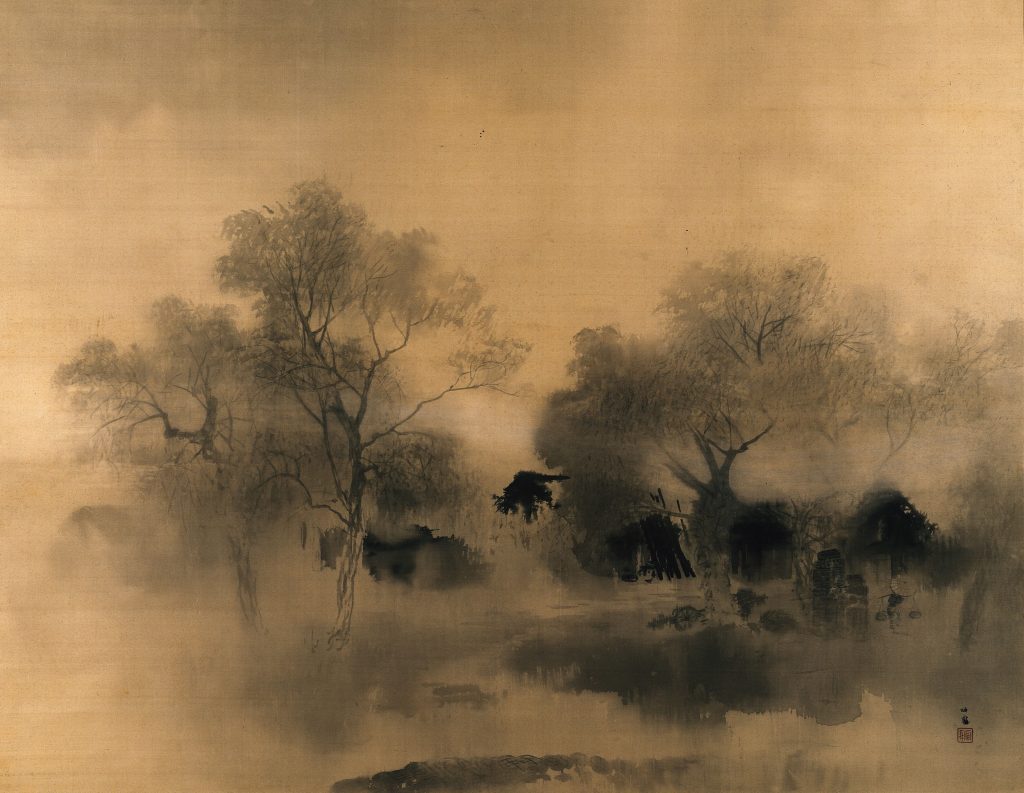
Takeuchi Seiho,Rain,1911(Meiji44),Kyoto City Museum of Art(April 16-May 12)
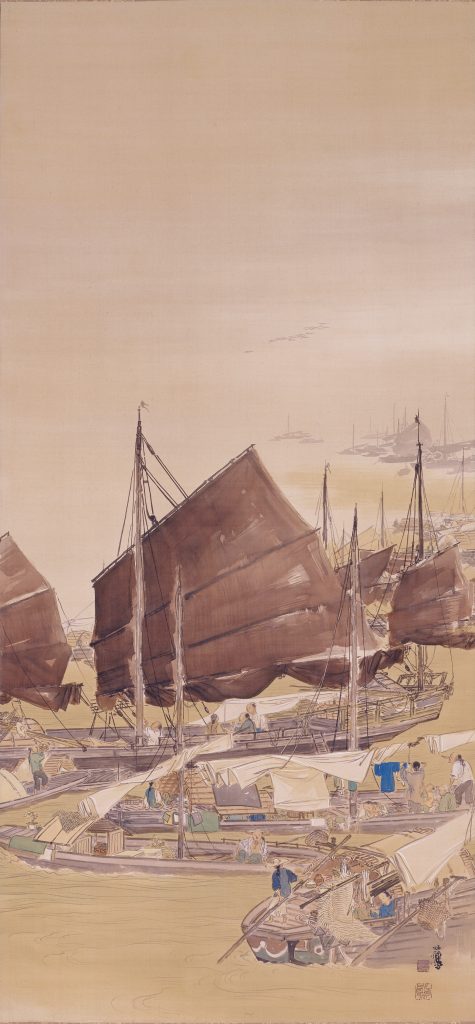
Takeuchi Seiho,Harbor in Springtime,Ca.1905(Meiji38),Umi-Mori Art Museum
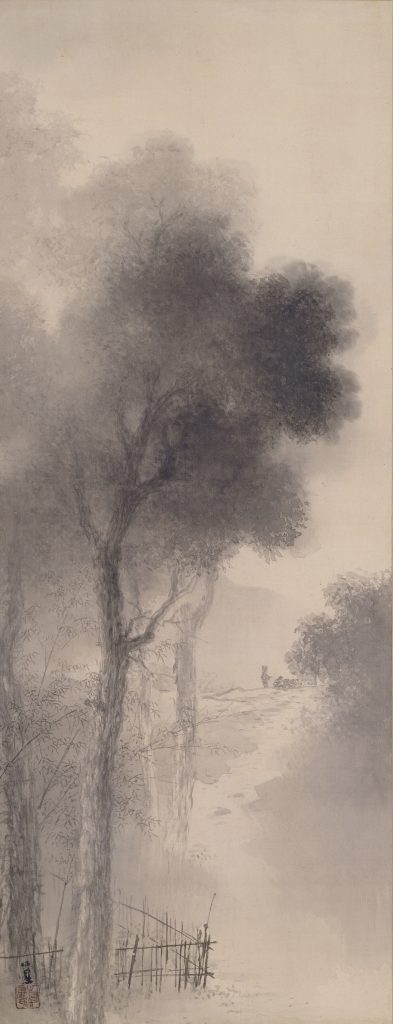
Takeuchi Seiho,Evening Field in a Suburban Village,Ca.1905(Meiji38),Umi-Mori Art Museum
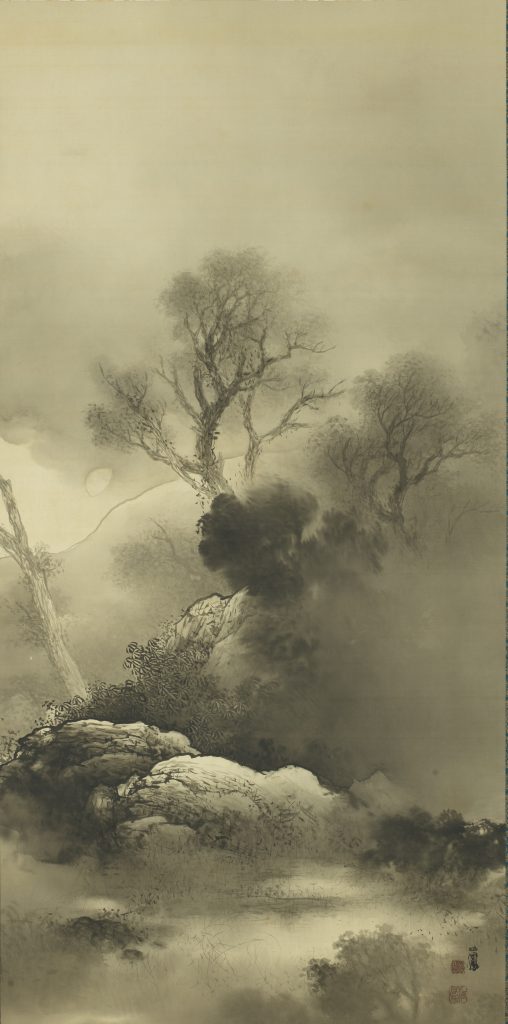
Takeuchi Seiho,Melancholic Autumn Scene,Ca1905(Meiji38),Umi-Mori Art Museum
Chapter Four: Amid a Revolution in Japanese Painting
The Bunten exhibition created a stage for painters to compete artistically. However, some young painters became distrustful of the way these government-sponsored art competitions were judged. Centered around Tsuchida Bakusen, Ono Chikukyo and other pupils of Seiho’s, this group subsequently formed the National Creative Painting Association as a forum to freely release their art to the wider world, with Seiho also serving as an advisor. Seiho’s ambitious drive to create without fearing change was inherited by this next generation of painters, with his students also producing works bursting with individuality and originality. All this was a sign that Japanese painting in Kyoto had truly entered a new period of change.
While looking out for all these young painters and supporting their activities, Seiho also pursued opportunities to reconsider his own work. To this end, he travelled to China in 1919-20. China was the original source of the Japanese painting Seiho had studied, so Seiho felt a painterly duty to see for himself the natural landscapes that inspired these Chinese paintings and the buildings portrayed in these works, for example.
From the end of the Meiji era to the start of the Taisho era, Seiho also tried his hand at figure painting. Seiho’s relentless drive to challenge himself is apparent in Posing for the First Time (No. 4-2; on display from May 1–22) and other works conceived while sketching nude models.
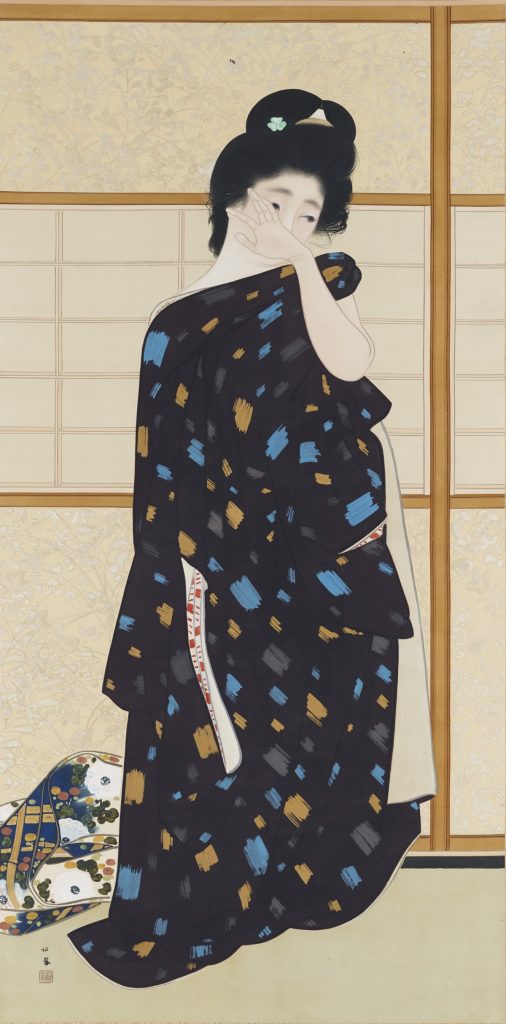
(Important Cultural Property)
Takeuchi Seiho,Posing for the First Time,1913(Taisho 2),Kyoto City Museum of Art(May1-May12)
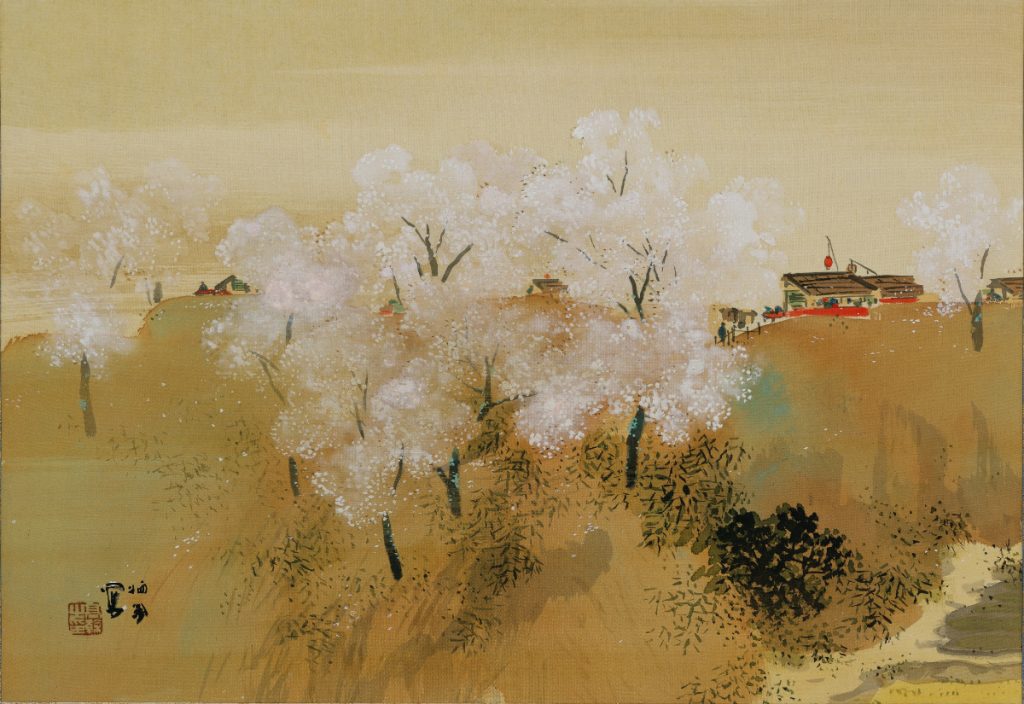
Takeuchi Seiho,Blossoms on a Hill,Ca,1919(Taisho8),Umi-Mori Art Museum
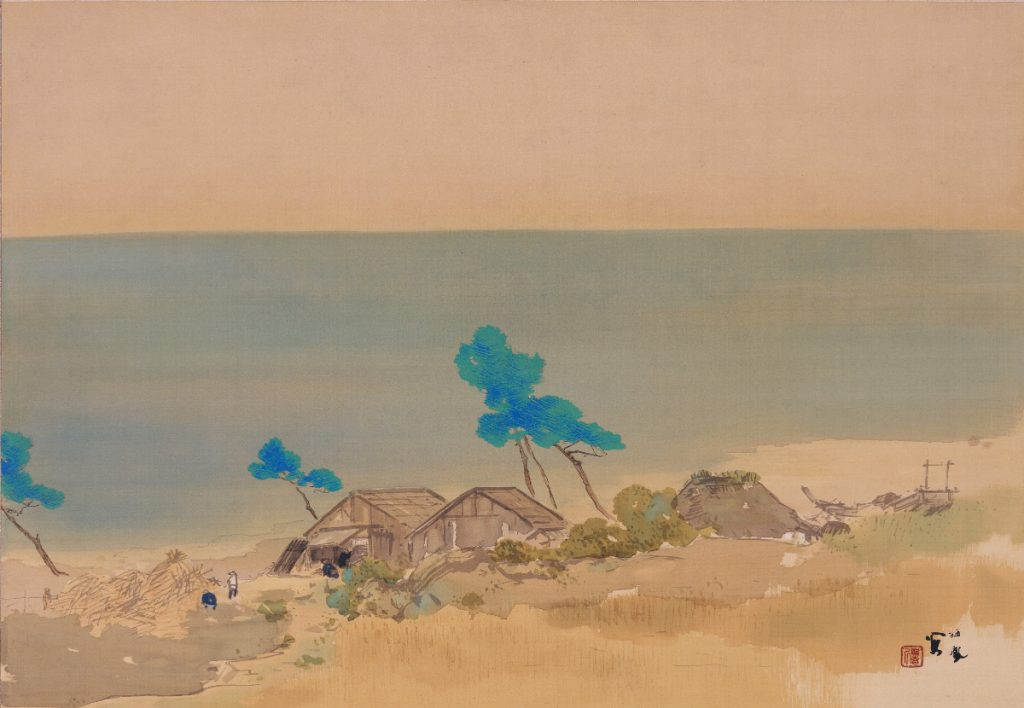
Takeuchi Seiho,Early Summer,
ca. 1926(Taisho15),
Umi-Mori Art Museum(April 16-April 29)
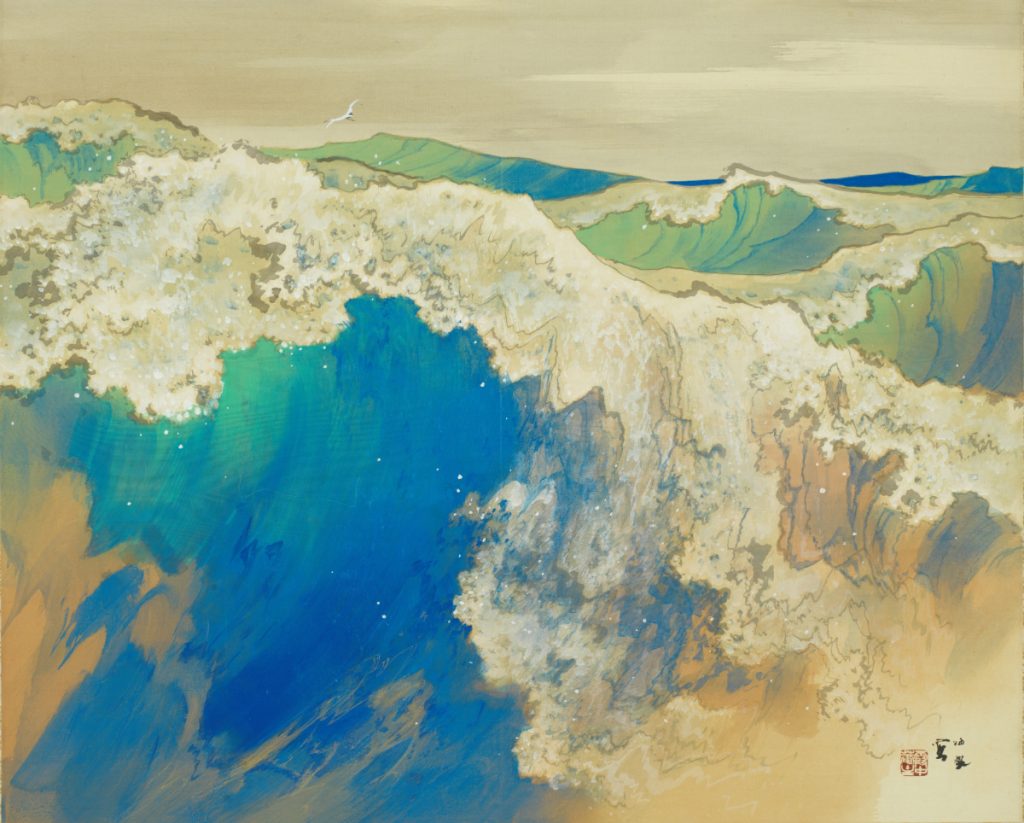
Takeuchi Seiho,The Wind and Waves,ca. 1918(Taisho7),Umi-Mori Art Museum
Chapter Five: Entering the Realms of Unconstrained Freedom
Early on in the Showa era (1926–89), Seiho paid a visit to Itako, a lakeside district in Ibaraki Prefecture. To the casual observer, Itako was probably nothing more than a sprawling village, but Seiho found scenery reminiscent of China’s Yangzhou and he walked around making sketches that later became paintings. During this time, Seiho made a habit of discovering and painting places that were not particularly famous, like Itako, and he would also paint ordinary things and creatures from everyday life. These works reveal an artist searching freely for new subjects, without being constrained by tradition.
Seiho also created a number of masterful animal paintings from the end of the Taisho period to the Showa period. While some works depict animal fur with intricate brushstrokes, others like Young Ducks and Valiant Tigers eschew lines to keep the brushwork to a minimum. Seiho’s works were based on meticulous sketches, so perhaps he felt confident enough to slough off unnecessary lines because he had gained a thorough understanding of his subjects through these sketches. In this light touch, we can see a master continuing to explore new forms of expression even in old age.

Takeuchi Seiho,Resting Tiger,
ca.1927(Showa2),Umi-Mori Art Museum
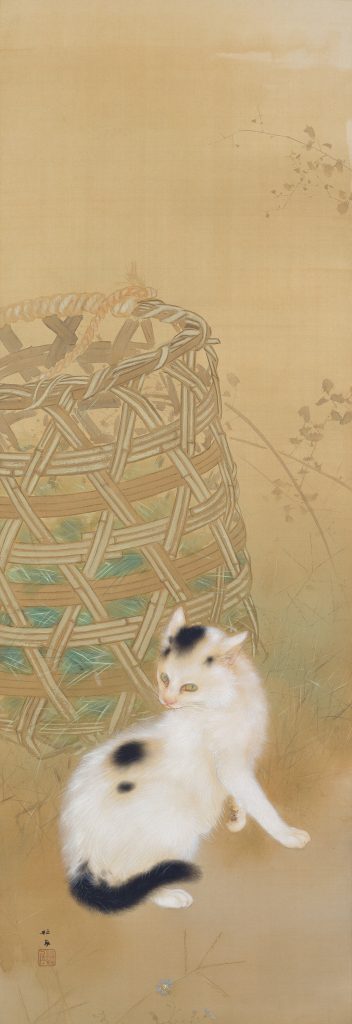
Takeuchi Seiho,Indinan Summer,
1927(Showa2),Umi-Mori Art Museum
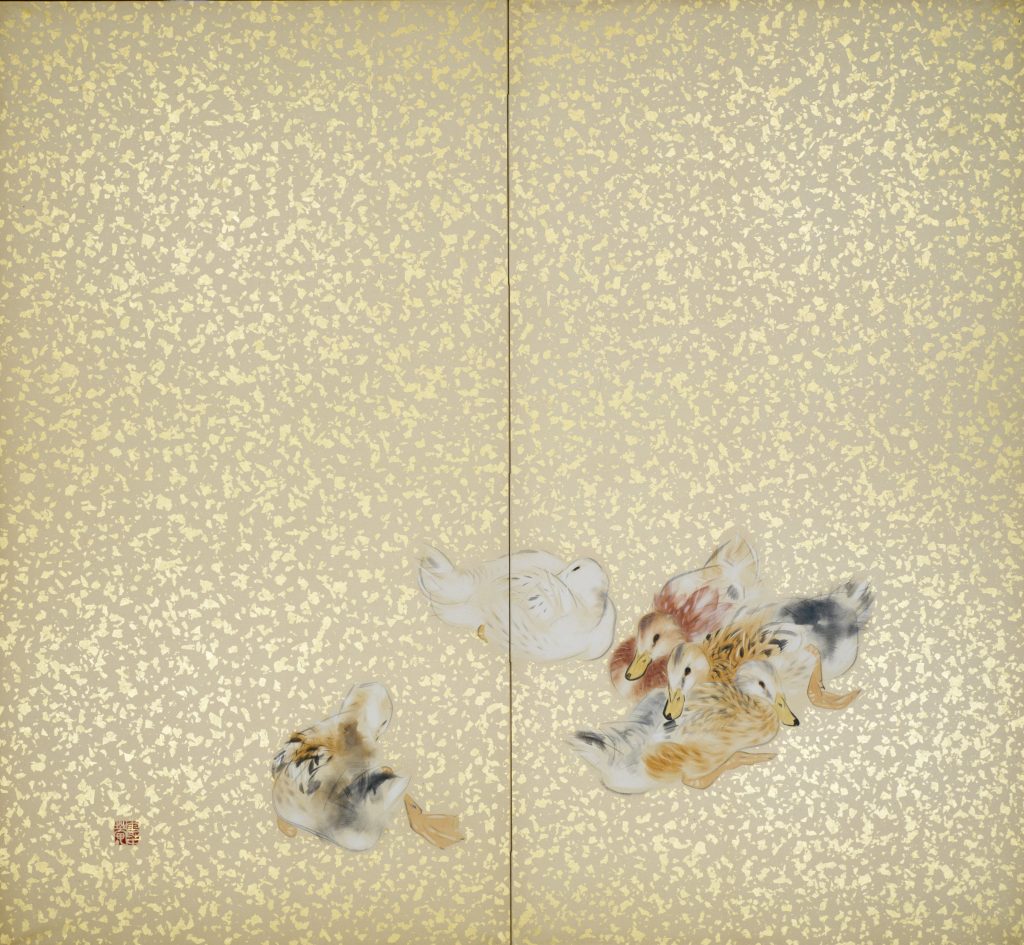
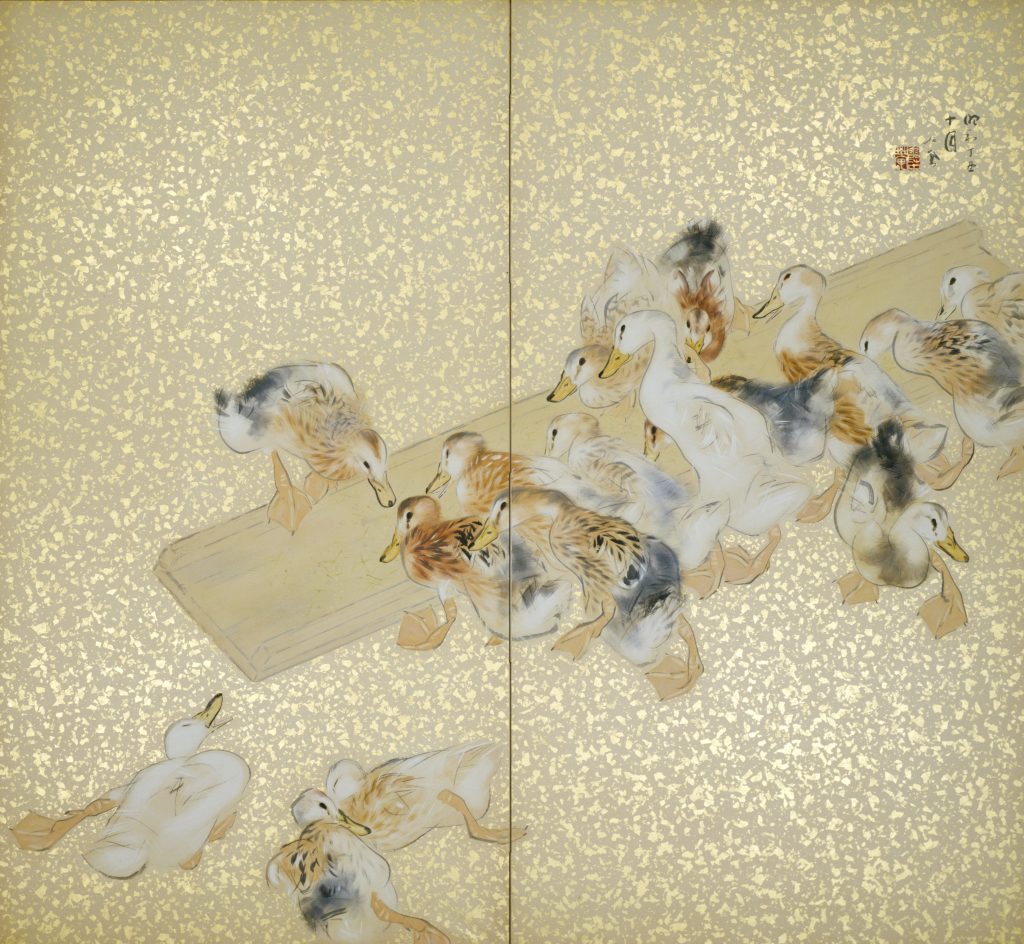
Takeuchi Seiho,Young Ducks,1937(Showa12),The National Museum of Modern Art,Kyoto(April 16-May 12)
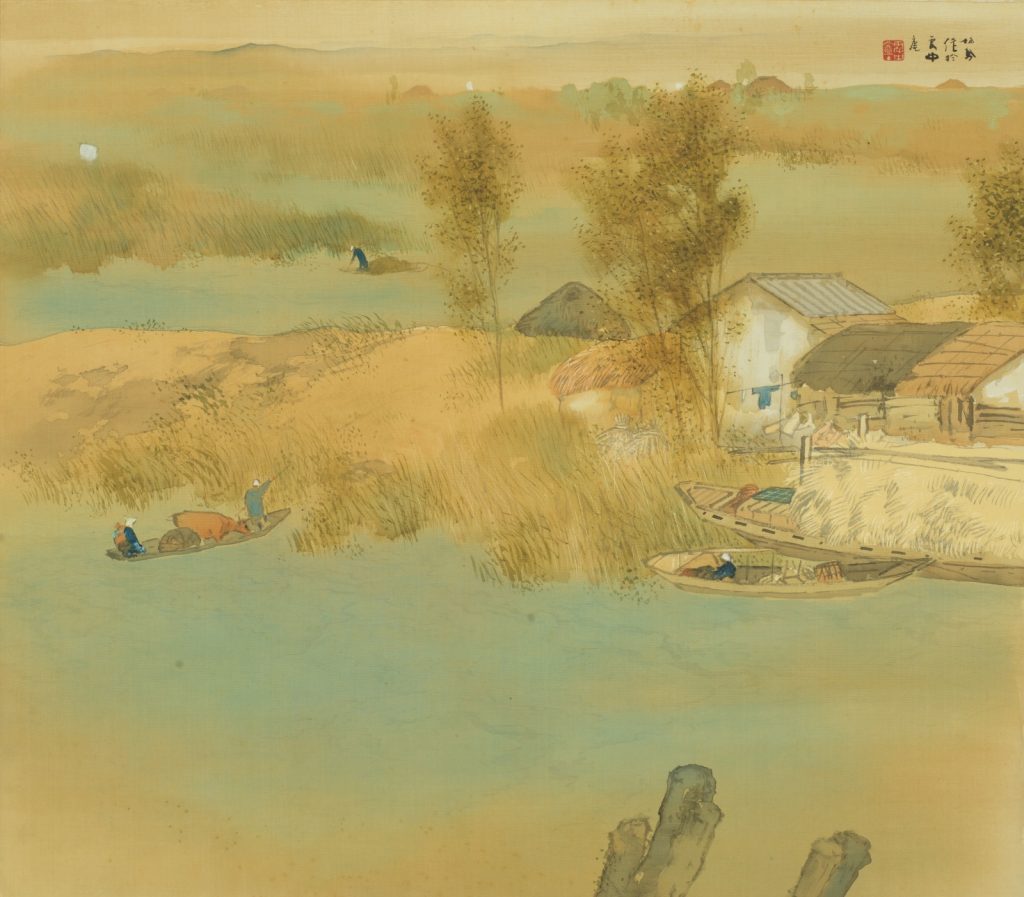
Takeuchi Seiho,Early Summer in Itako,Ca.1929(Showa14),Umi-Mori Art Museum
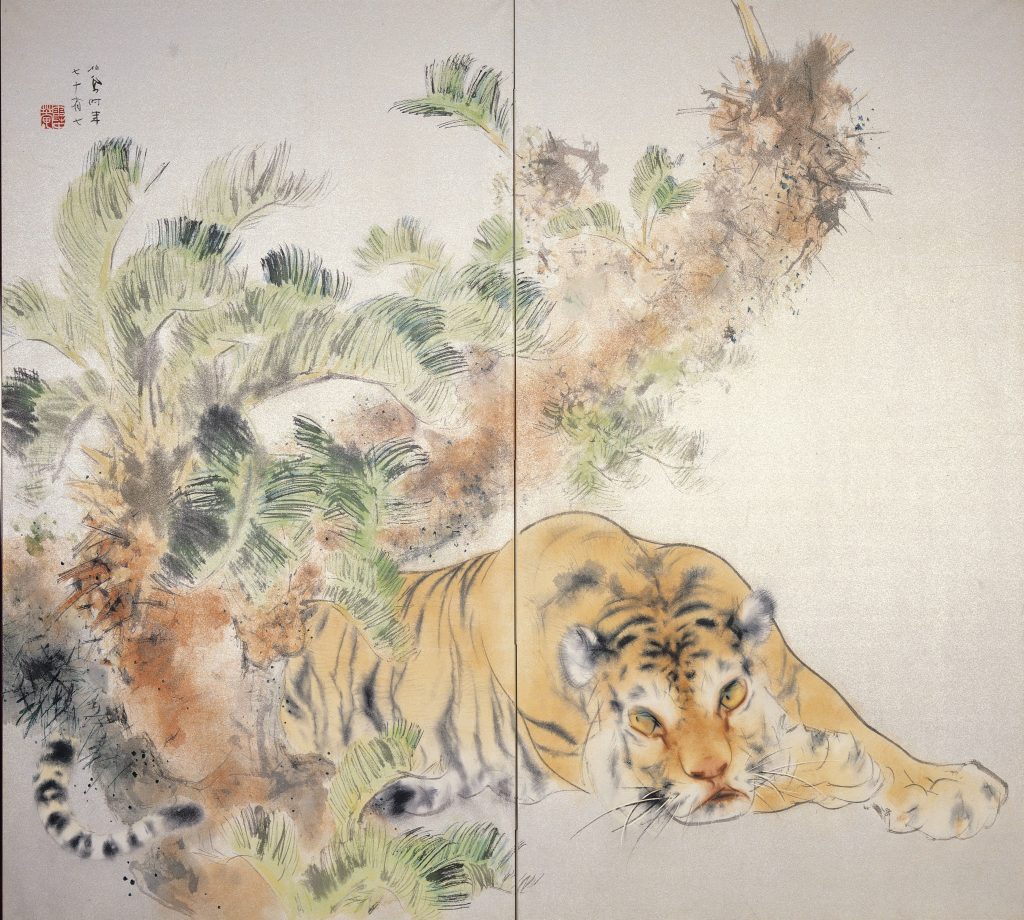
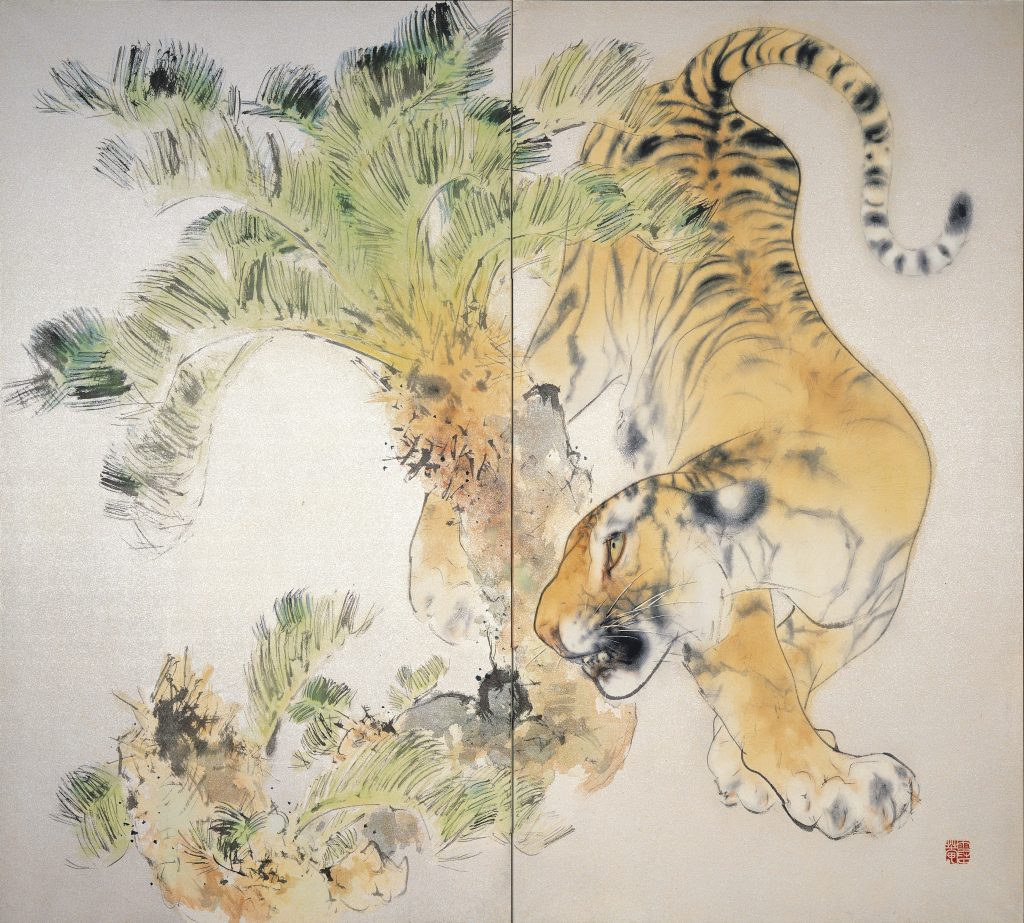
Takeuchi Seiho,Tigers,1940(Showa 15),Kyoto City Museum of Art(March 16-April 14)
Chapter Six: The Unofficial Record of Seiho’s Personal Life
Seiho always remained active at the heart of Kyoto’s painting world. He continued painting amid all the praise and criticism and there are many fascinating anecdotes about his life. This chapter features painting materials, sketches and other items that tell the tale of Seiho’s relationships.
Seiho collected a variety of picture postcards, photographs and documents to aid him in his work. Throughout his life, he also kept the painting materials inherited from his teacher Kono Bairei. All these became sources of inspiration for his creative activities. The sketches also show how Seiho planned out his compositions while paying close attention to even the finest of details.
We can read Seiho’s own words about his relations with his teacher Kono Bairei, his children, his friend Terasaki Kogyo, and his older sister Koto (who supported Seiho in his quest to become a painter, but his feelings for these people are also expressed in his paintings.
These enlightening works and materials reveal a hidden human side to the master painter Takeuchi Seiho.
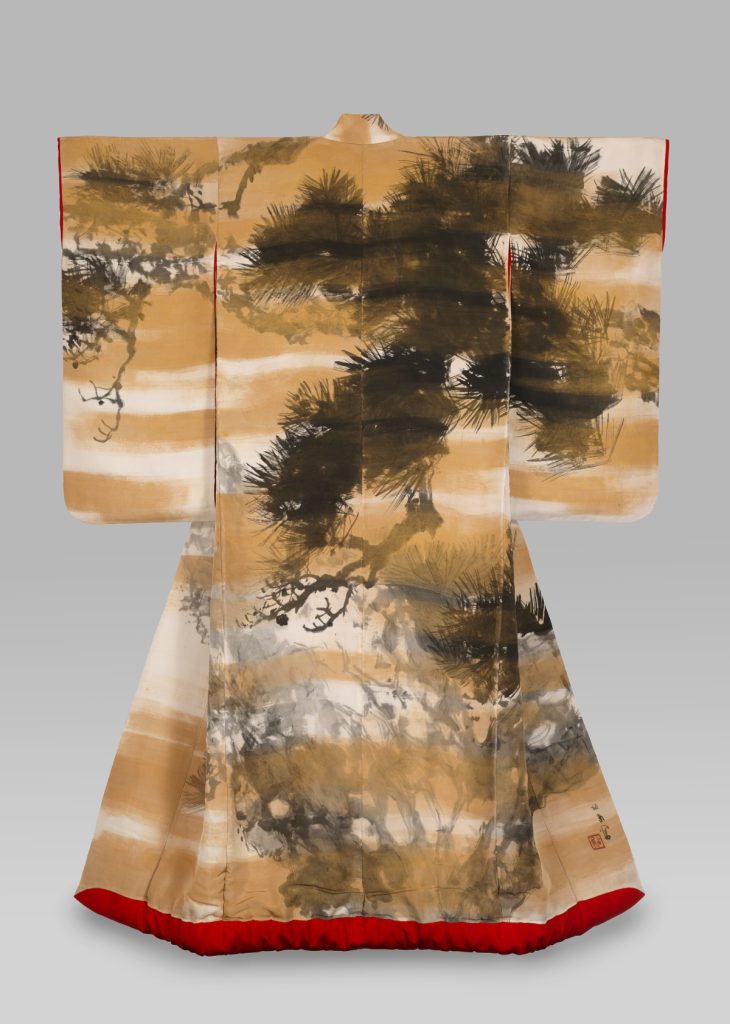
Takeuchi Seiho,Uchikake Robe,1919(Taisho8),Umi-Mori Art Museum
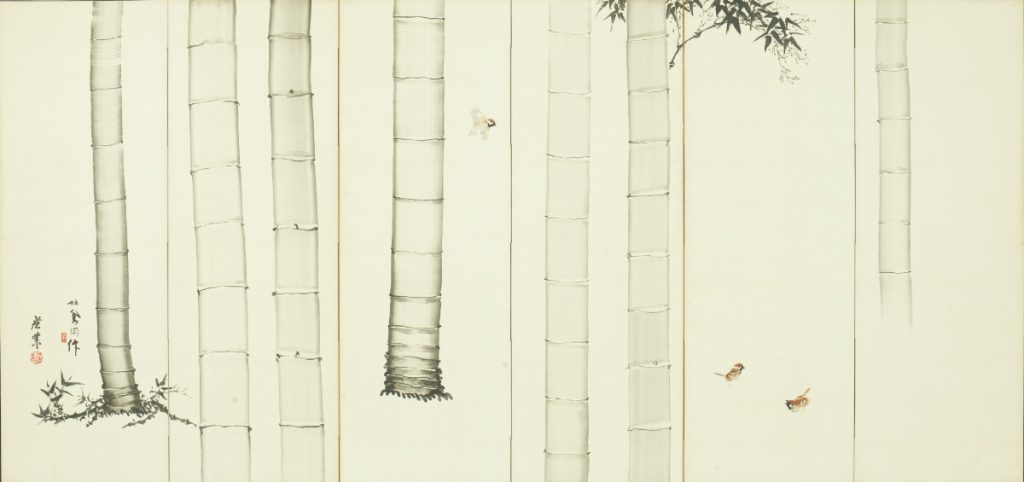
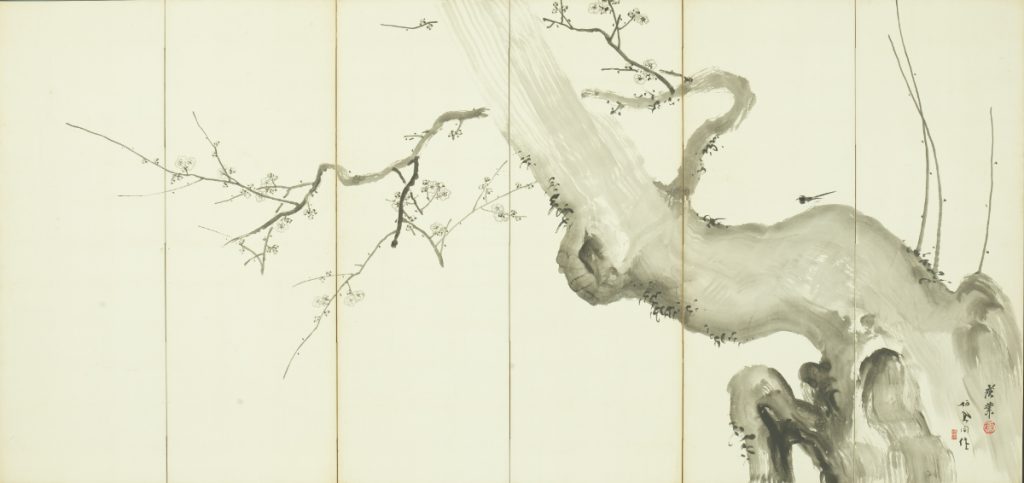
Takeuchi Seiho,Terasaki Kogyo,Bamboo Trees and Plum Tree,Bamboo and Plum:1910(Meiji43),Birds:1932(Showa7),Umi-Mori Art Museum


